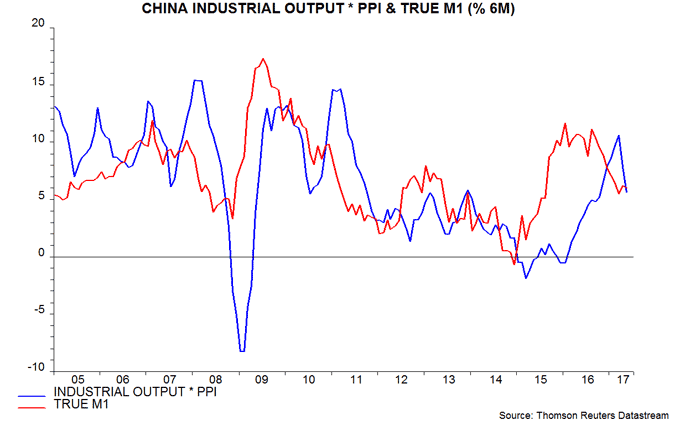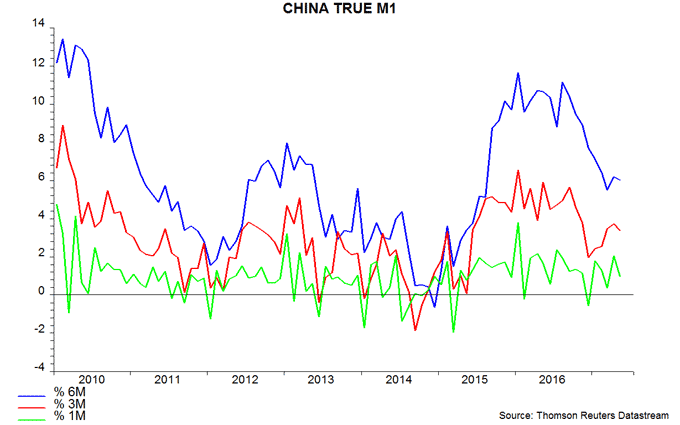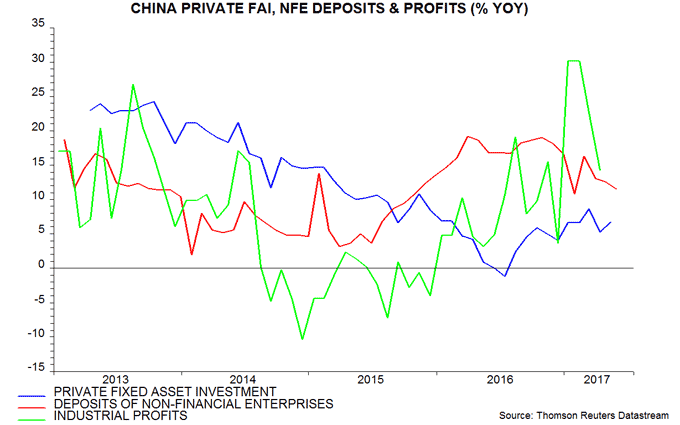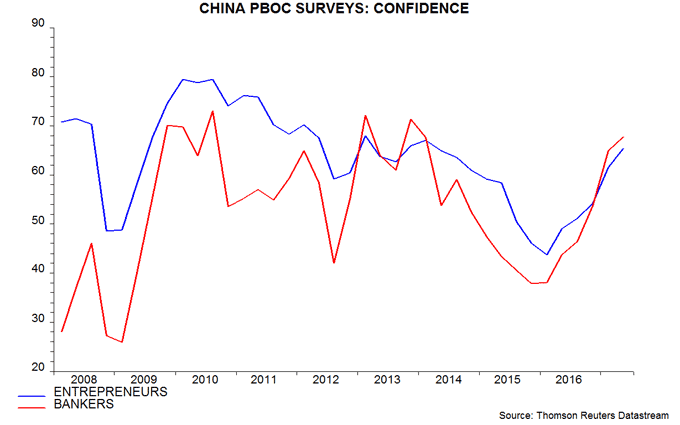Chinese narrow money / other data giving reassuring message
Chinese narrow money growth is holding up, suggesting that the economy will expand respectably during the second half of 2017. An earlier monetary slowdown, meanwhile, has been reflected mainly in a weakening of inflationary pressures, creating scope for the PBoC to reverse recent policy tightening.
The preferred narrow aggregate here is “true” M1, comprising currency in circulation and corporate / household demand deposits. The official M1 measure includes only corporate deposits; household deposits are relevant for assessing consumer spending prospects.
Six-month growth of true M1 surged in 2015-16, resulting in a forecast here that the economy would reflate in 2016-17 – contrary to a bearish consensus at the time. Six-month growth of nominal industrial output (i.e. output volume multiplied by producer prices) rose strongly from late 2015 to a peak in March 2017 – see first chart. Other evidence of reflation included accelerating house prices and strong profits expansion. 
The normal pattern is for faster money growth to be reflected first in a rise in economic momentum, with prices accelerating later. In this case, however, the growth effect was small and the inflation effect large and rapid. Six-month growth of industrial output volume rose from 3.0% (not annualised) in December 2015 to a peak of 4.5% in March 2017, while the six-month change in producer prices (seasonally adjusted) surged from -3.3% at end-2015 to +6.4% in February 2017 – second chart.
The apparently small pass-through to economic activity may reflect “smoothing” of the official output data, i.e. the earlier weakness of the economy was understated, resulting in a less impressive subsequent rebound. Indirect activity gauges such as electricity consumption and rail freight traffic suggest a stronger growth pick-up since late 2015.
Six-month true M1 growth fell significantly between August 2016 and March 2017 but recovered in April / May and is much higher than in 2014 / early 2015. Three-month growth has revived from a low in December – third chart. The monetary slowdown has already been reflected in a sharp deceleration of producer prices, which fell month-on-month in April and May. The rapid pass-through to prices is supporting real money growth, in turn suggesting that the economy will expand respectably through late 2017.
The rise in market interest rates during the first half – three-month SHIBOR is up by 140 bp – could lead to a further monetary slowdown over the summer, with negative economic implications for early 2018. The rapid easing of inflationary pressures, however, gives the PBoC scope to reverse course to pre-empt any significant weakness.
Other recent evidence supports the view that the economy retains momentum. Measures to discourage property speculation have slowed price gains but housing sales and starts are still rising year-on-year – fourth chart.
Growth of enterprise bank deposits and industrial profits has cooled but remains solid, supporting prospects for private fixed asset investment – fifth chart.
The PBoC’s second-quarter surveys of entrepreneurs and bankers, meanwhile, showed further rises in confidence, to the highest levels since 2013-14 – sixth chart.

Reader Comments